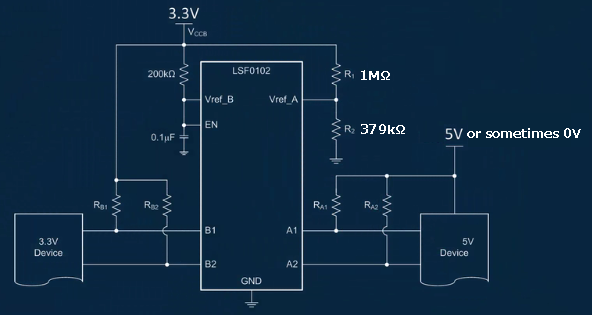Hello Team,
I have two questions below.
1) When looking at "9.2.1.2.2 Pull-up Resistor Sizing" in the datasheet, Rpu seems to be usable if it is 341Ω or more.
Is there any problem using 10kΩ for Rpu ?
2) When Vref_A=3.3V and Vref_B=OE=0V, is there damage to the device ? No problem ?
Usually we use Vref_A=3.3V and Vref_B=OE=5V, sometimes there is not supply of 5V power.
Best regards,
Kato





